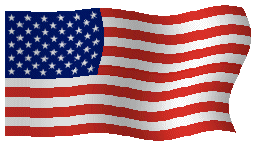As my oldest granddaughter once said: "Here my are!" I've not posted for a few weeks because I've been otherwise occupied with Frank's everyday needs. Back on February 20th, he fell and suffered a compression fracture of his L1 vertebra: piercing pangs of pain. So I've become his gofer and bathroom assistant. Though I've lost a bit of sleep because of nighttime potty trips, it all keeps me busy, I've lost several pounds (a nice side effect) and I'm doing the exercises along with him. It's good for me.
I passed up posting several of my essays. Frankly, some of them are really a little to "dry." Here's one that I enjoyed researching for the magazine. The Olympics couldn't come at a better time for a house-bound man like Frank. We've always enjoyed watching the games - summer and winter - and this year will be no exception.
On October 24 last year, the Olympic torch was lit in
Greece. It was on its way, over 5,000 miles, to light the flame in South Korea
at the opening ceremonies of the XXIII Winter Games on February 9. There were
16 different events at the first Winter Games were held in Chamonix, France,
and there will be 102 in Pyeongchang. Some of the games to be held couldn’t
even have been imagined in 1924.
The Chamonix games consisted of several events in figure
skating, speed skating, Nordic skiing, bobsleigh, ice hockey, and curling. Though
many people are unfamiliar with the sport of curling, it was an Olympic
demonstration sport in the first games, and was given official status in 1998.
Today’s games include all of those, plus Alpine skiing,
freestyle skiing, snowboarding, luge, and skeleton. As with the speed skating
events where there are now short track and longer distance events, figure
skating, where they no longer have to do compulsory figures, and Nordic skiing
have also lengthened their event lists.
Both the Winter and Summer Olympics have had their
controversies: arguments over commercialism and corporate sponsorship, doping, bribery,
and cost overruns for host cities. Good and bad, happy and sad, news-wise,
the Winter Olympics have fared better, usually taking a back seat to the summer
events. We remember 1968 summer games in Mexico City for the fists raised in
protest on the podium, and for the Fosbury Flop. 1972 in Munich brought the
lethal hostage crisis, but it also gave Mark Spitz his record-breaking seven
gold medals. At the 1976 games in Montreal, Nadia Comăneci scored the first perfect
10.0, but those games also brought protests against apartheid.
Sixteen countries participated in those first Winter Olympics.
Over the years, Norway, which won the most medals in those games, has also won
the most medals: 329. You might expect that, because so many of the events are,
after all, Nordic. They practically invented skis. The United States comes in
second with 282. In those first Winter Olympics, Charles Jewtraw, from New York
State, won the gold in the men’s 500 meter speed skating, the first gold of the
games.
Come February, we’re midway in the ice hockey and basketball
seasons. The Super Bowl is usually in the books, the baseball season is yet to
come, and auto racing of any kind is on winter break, as are many other popular
outdoor sports. At this relatively quiet time of the year the Winter Olympics,
televised since the games in Squaw Valley, have given us some very memorable
moments.
At those 1960 Olympics, American David Jenkins won the gold
medal in men’s figure skating and Carol Heiss won the women’s gold. Since then,
we’ve watched the likes of Peggy Fleming, Scott Hamilton and Dorothy Hamill do
the same. Another memorable skating moment was watching England’s Jayne Torvill
and Christopher Dean bring the ice dancing competition out of its staid
traditions into the modern era with their stunning interpretation of a bolero.
 |
| Torvill and Dean |
In skiing, we’ve watched the likes of the Mahre brothers,
Phil and Steve, Bode Miller, Picabo Street, and Lindsey Vonn wipe out or win
big on the slopes. In speed skating the names Eric Hayden and Apolo Ohno strike
a familiar note, as do those of Bonnie Blair and Leah Poulos. The biggest and
best winter memory for most of us is the “Miracle on Ice.”
In Lake Placid, in 1980, the teams played rounds in two groups.
Our American team, consisting mostly of collegiate players, beat some of the
historically best teams in the game, and topped their group with Sweden second.
The final round robin games were played against the Soviet Union, a team of
most professional players who had won the gold medal in the last four games,
and the team from Finland. Never even slated to get out of the preliminary
rounds, our American team beat the Soviets and then the Finns to take the gold.
Goal! “Do you believe in miracles?”
Many of us remember seeing the final game live – but we
didn’t. Because of complaints that the game would be held in the wee hours of
the European morning, the game was held in the afternoon, and was played on
tape delay here in the states. Live or on tape, the excitement was the same.
Will these 2018 games hold the same excitement and offer the
same memories? We hope so. NBC will be televising everything live – no more
tape delay just to entice you in prime time. Here on the east coast we are 13
hours behind South Korea – in effect, their morning will be our evening. Anyone
particularly interested in any one sport may have to adjust their personal
schedules to accommodate watching their favorites compete.
U.S.A.!! – U.S.A.!!






No comments:
Post a Comment